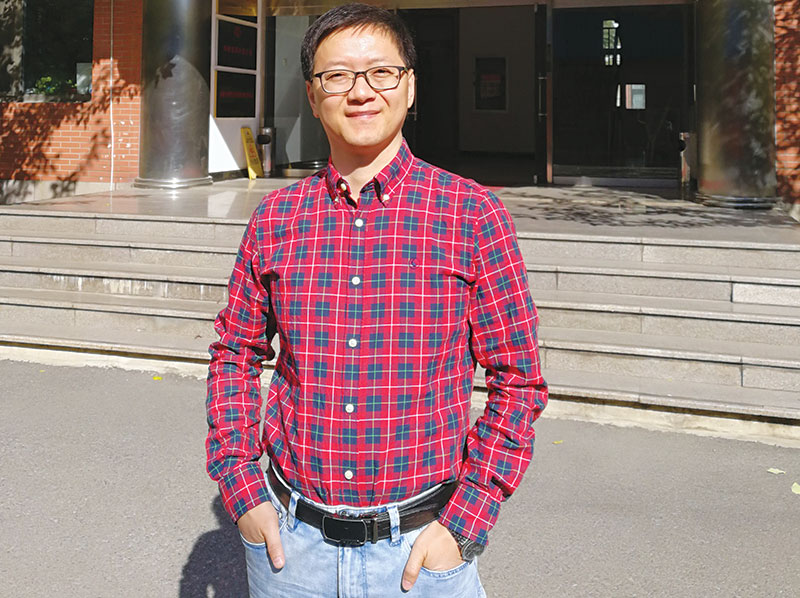Pains & gains of the world’s toughest school-leaving exam

Li Liang
The high rankings awarded to China’s universities in the annual WUR (World University Rankings) of the highly-reputed London-based higher education institution rating agencies Quacquarelli Symonds (QS) and Times Higher Education (THE) in their latest (2018) league tables — three Chinese universities are ranked by QS and two by THE among the global Top 50 — have aroused worldwide interest in China’s education system, especially in India as your editor assures me. In particular, there’s great interest — and reportedly considerable confusion — in India about China’s gaokao, (‘high exam’), officially known as the National Higher Education Entrance Examination, the world’s largest entrance test taken by 9.75 million school-leavers (2018) which determines entry into all 2,914 higher education institutions (HEIs) countrywide. Typically, it is written in early June by 17-18 year-olds who have completed 15 years of kindergarten to higher secondary education.
Written over two days, in tens of thousands of examination centres countrywide, the gaokao requires school-leavers to write four test papers including Chinese and mathematics which are compulsory for all examinees. Subsequently, students have to write a social sciences exam (a comprehensive test in history, political science and geography) or natural sciences (physics, chemistry and biology — all in one paper!). The fourth exam is a language paper, usually English, but can be substituted by Russian, Japanese, German, French or Spanish.
A few days after completion of the gaokao, students are given the model answers for all four exam papers and are asked to estimate the score they will be awarded and list the colleges and universities they would prefer to be admitted into based on their self-estimated score. However, students are ranked and finally accepted by HEIs on the basis of aggregate marks in the high exam. Top-scorers in each province or city are likely to be admitted by the globally high ranked Tsinghua and Peking universities, with lower scoring students accepted by lower ranked HEIs and the lowest scorers entering three-year vocational colleges.
In China, HEIs are informally divided into public/government-owned and private or independent institutions. According to the latest data (May 2017) released by the ministry of education, the total number of HEIs in China aggregates 2,914, which includes 2,631 national colleges/universities (including 265 independent institutions) and 283 adult HEIs. The aspiration of the overwhelming majority of the almost 10 million school-leavers who write the gaokao annually is to be accepted into the top-ranked 100 national colleges/universities which admit a total number of 475,000 gaokao toppers. Little wonder that this is commonly described as the world’s most competitive examination.
Although it’s easier for students of well-provided schools in Shanghai, Beijing and Guangdong to be admitted into the top-tier 100 national universities, there’s a consensus in academia that gaokao offers school-leavers across the country a fair and equal chance to enter the best HEIs — a necessary precondition for becoming academic, political and business leaders, or at least to improve their social status. In 21st century China, obtaining a degree (or at the very least a diploma) is the prerequisite of a white collar job and well-paid employment.
Inevitably, this make-or-break exam which shapes the lives and future of 10 million children every year is attracting criticism in academia. A major objection is the high pressure it exerts not only on senior school students but also on their families. In millions of households across China, the three years of high school leading to the gaokao is a brutal experience for students and parents. Teenage suicide rates rise during and after gaokao, and high school teachers are also under enormous stress to ensure good scores in this testing national examination, and therefore are often accused of encouraging cramming and rote learning to produce robot students lacking the spirit of innovation.
Moreover, gaokao critics argue that the fierce competition and over-emphasis on high scores encourage cheating and exam malpractices such as surrogate examinees and ‘gaokao immigration’. Under the rules of the exam, pass grades are lower in underdeveloped western provinces (including Tibet). This has prompted a large number of students to register themselves as residents of the western provinces.
However to the credit of the education ministry, this high exam is being constantly monitored and improved. This year, a new weighted system under which HEIs have been directed to “take high school grades into account when calculating the gaokao grade”, has been introduced. This, according to the ministry, will level the playing field and “admit more students from impoverished and rural areas”.
Yet the true value of the gaokao despite its downsides is that it filters and ensures that the most determined and capable school-leavers enter China’s well-endowed and well- equipped Top 100 universities after 15 years of rigorous K-12 education. This is a major reason why the country’s universities are rising in the global WUR league tables and their graduates have transformed 21st century China into a global economic super power.
(Li Liang is deputy director of the Department of Foreign Language Books Publication of the Beijing Language and Culture University Press)
















Add comment